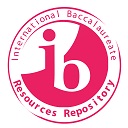Focus group: Climate change denial
 The following is a sample Paper 3 that looks at focus groups. Below you will first find the stimulus piece, followed by the static questions. A copy of the mock paper is included to give students as an in-class assessment.
The following is a sample Paper 3 that looks at focus groups. Below you will first find the stimulus piece, followed by the static questions. A copy of the mock paper is included to give students as an in-class assessment.
Potential answers are included in the hidden boxes below.
Stimulus piece
Often psychologists find that there is a significant difference between what people think that they should do and how they actually behave. For examples, surveys show that people are aware that foods high in fat and sugar are bad for them, but they do not change their diet. Another area where there is a striking difference between understanding and behaviour is with regard to the environment. People consistently demonstrate a concern about the consequences of climate change, but they do very little to change their own behaviours or support changes within their community.
Stoll-Kleeman et al. (2000) carried out a series of focus groups in order to get a better understanding of this problem. The typical group size was 6 - 8 people. The participants were selected by a stratified sample from the adult Swiss German-speaking population. Using the official files of telephone numbers, people were called making sure that each group would be diverse with regard to gender, age, education, and environmental attitudes.
Each group met for five interviews of about two and a half hours each. Each focus group started by looking at models of the possible consequences of climate change. A specialist presented the model and then allowed questions for clarification. Then the group discussed what they felt they could do in order to lower the effects of climate change. The group discussions were videotaped and the tapes transcribed. A content analysis was carried out on the transcripts.
Members of the group were alarmed about the consequences of climate change. But when discussing whether to change their lifestyles of material comfort and high-energy dependence, they did not feel that this was a priority. They discussed the costs of shifting away from comfortable lifestyles, set blame on the inaction of others, including governments, and expressed doubts regarding how much effect personal actions would actually have on climate change.
These findings suggest that more attention needs to be given to why individuals erect barriers to their personal commitment to slowing climate change, even when they express anxiety over the future.
Stoll-Kleemann, S, O’Riordan T. & C Jaeger. (2000) The psychology of denial concerning climate mitigation measures: evidence from Swiss focus groups. PIK Potsdam Institute of Climate Impact Research, Social Systems, PF 601203.
Questions
1a. Identify the method used and outline two characteristics of the method.
The researchers used a focus group interview. Focus groups are very efficient. Several interviews are carried out at the same time. In addition, since the goal was to carry out several sessions in order to see if there was a consistency of response to the questions, using focus groups really cut down on the amount of time and the number of researchers necessary to carry out the research. Secondly, focus groups help to prompt discussion. One-on-one interviews may feel less naturalistic, less like a free conversation about a topic. Focus groups are high in ecological validity and the participants may get ideas from each other that they would not have thought of in a one-to-one setting. This may help the researchers to obtain richer data.
1b. Describe the sampling method used in the study.
The researchers used a stratified sampling technique. Participants were selected non-randomly according to some fixed percentage. In stratified sampling you want to represent the major characteristics of the population by sampling a proportional amount of each - that is, you want the characteristics of the group to reflect the proportion of those characteristics which exist in the target population. For instance, if you know that 20% of the population has an advanced degree, 50% has an undergraduate degree, 20% has a vocational degree and 10% has a high school education, then you want a sample that has that same distribution of education level. The reason for using a stratified sample is so that the researcher can more easily generalize the findings to the target population. If the sample reflects Swiss society, then it is likely that the findings will reflect the general behaviour of the Swiss community.
1c. Suggest an alternative or additional research method giving one reason for your choice.
The researchers could carry out a survey. This would allow the researchers to collect more data more efficiently. It would also be a highly standardized process which would be easier to analyse than the focus group interviews.
Both structured and unstructured interviews would also be possible. Structured one-on-one interviews may allow participants to speak more honestly, avoiding conformity effects or social desirability effects that may occur in a focus group. An unstructured interview would avoid potentially "leading questions" from the interviewer and allow the participant to decide the direction of the discussion. This may help the researcher to obtain unexpected data which would not have been obtained if there were a set of standardized questions.
2. Describe the ethical considerations in reporting the results and explain ethical considerations that could be taken into account when applying the findings of the study.
3. Discuss how the researcher might avoid bias in this study.
To avoid bias, the researcher might use reflexivity. Personal reflexivity asks the researcher to reflect on his own biases and how they may have affected the study. Whenever "issues" are studied, one has to question the motivation of the researcher. It is possible that the researchers are very pro-environmentalist and are very concerned about global warming. This may mean, then, that they may be more critical of those who do not change their behaviour. They may read into comments about the "difficulty of changing behaviour" as a "reluctance to change behaviour." They may also mistake the expression of interest as being "alarmed." The researchers should disclose this information as the interpretation of the transcripts is highly subjective and their personal biases could have an effect on their conclusions.
Another way to control bias is to consider the method that is being used. Could a different approach have brought about a different understanding of the topic? In this case, the researchers may reflect on the use of the models and the expert. It could be that the reactions of the group were less about their own feelings about climate change and more about the models that were presented. This, however, was accounted for by having five different meetings in which different models were presented. It could be that the group was responding to the expert. Feelings that the expert was arrogant, overly confident or patronizing could lead the group to take a contrary opinion and be more argumentative. If the expert seemed to hesitate or express doubt, then this could account for the response from the participants. Many of these ideas could have been communicated on a non-verbal basis to the participants. Finally, the use of a group interview has its disadvantages. The researcher should consider how conformity effects or power hierarchies within the group may have affected individual responses. It is important that the researcher reflects on the extent to which these factors could have played a role in the findings.

 IB Docs (2) Team
IB Docs (2) Team
